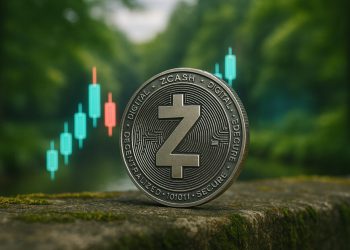For years, DeFi occupied the edges of institutional strategy, a curiosity for crypto-native funds, and a compliance headache for everyone else.
However, regulatory moves are slowly changing this stance. Among traditional hedge funds already holding digital assets, 43% now plan to expand into DeFi over the next three years, primarily through tokenised funds, tokenised assets, and direct platform engagement.
Nearly 33% of this group expects DeFi to disrupt their current operations in ways that necessitate adaptation, rather than just incremental adjustments.
The same dataset shows that 55% of traditional hedge funds now hold some crypto exposure, up from 47% in 2024. The numbers are from the 2025 Global Crypto Hedge Fund Report, published by AIMA and PwC on Nov. 5.
The report surveyed 122 managers and investors representing $982 billion in assets.
Of those hedge funds invested in crypto, 71% plan to increase their allocations over the next twelve months.
The pattern is that managers first normalized Bitcoin, Ethereum, and exchange-traded products. Now, they are mapping how to plug into on-chain liquidity, programmable collateral, and composable infrastructure. DeFi is no longer hypothetical; it is part of the three-year plan.
Efficiency gains against operational unknowns
The appeal rests on the assumption that on-chain rails can do things that centralized systems cannot, or cannot do well. Derivatives remain the dominant instrument for traditional funds with crypto exposure, used by 67% of these funds.
These managers live on leverage, hedging, and capital efficiency. The Oct. 10 flash crash, which liquidated over $19 billion in leveraged positions and severely impacted centralized exchanges, left decentralized exchanges comparatively unscathed.
Resilience under stress is crucial when your business model relies on liquid, 24/7 markets that remain open throughout weekends and regulatory holidays.
But resilience alone does not explain the roadmap placement. DeFi offers programmability, which is represented by collateral that moves instantly, yields that accrue transparently, and settlement that happens atomically.
For funds exploring tokenized structures, already a priority for nearly 33% of respondents, DeFi primitives become the infrastructure layer, not a speculative overlay.
Tokenized money market funds and treasuries, already in use for liquidity management, represent the regulated on-ramp for digital assets. Once a fund’s own units are tokenized, the question shifts from “should we touch DeFi?” to “which DeFi protocols fit our custody, compliance, and risk frameworks?”
The vulnerabilities are structural, not theoretical, as legal uncertainty is ranked as the top barrier to tokenization adoption, cited by 72% of respondents.
Smart contract risk, custody standards, and the absence of institutional-grade audit trails remain unresolved. Even among funds planning DeFi engagement, 21% view the technology as “irrelevant to our business model,” and 7% worry operational risks could reach “unacceptable levels.”
The split reflects a sector in negotiation with itself. For hedge funds, DeFi matters enough to study, but only if the underlying infrastructure works and regulators permit it.
Regulation as a permission structure
Timing explains the shift from observation to implementation. The US SEC’s “Project Crypto,” led by Chair Paul Atkins, represents a pivot from enforcement-first oversight to framework-building.
The OCC’s Interpretive Letter 1183 allows banks to custody and settle digital assets. The GENIUS Act formalizes stablecoin regulation, transforming them from a regulatory gray area into institutional-grade settlement tools.
These moves do not resolve every question, but they establish that on-chain activity can occur within supervised parameters.
Traditional hedge funds cite legal and compliance services as the area in greatest need of improvement, as 40% rank it first, nearly double the 17% who said the same in 2024.
Prime brokerage, custody, and banking rails follow. The importance of these structures indicates that hedge funds need defensible legal opinions, auditable custody solutions, and counterparties who will not close our accounts.
DeFi enters the roadmap precisely because it is starting to look supervisable, not because managers suddenly discovered yield farming.
The institutional investor base confirms the dynamic. Among allocators surveyed, 47% say the evolving US regulatory environment is prompting them to increase crypto exposure.
Family offices and high-net-worth individuals remain the largest investor group for crypto hedge funds, but fund-of-funds participation jumped to 39% in 2025 from 21% in 2024.
Institutional capital from pensions, foundations, and sovereign wealth funds reached 20%, up from 11%. It demands long-duration capital, and DeFi must meet that standard or remain sidelined.
What happens if DeFi becomes infrastructure
If DeFi transitions from experiment to infrastructure, the ripple effects reshape more than fund operations. Custody becomes programmable, with collateral moving based on code execution rather than manual instruction.
Prime brokerage splits into modular services, with one provider handling the legal wrapper, another managing on-chain execution, and a third monitoring risk.
Fund administration goes real-time: NAV calculations occur continuously, not at month-end, and settlement transitions from T+2 to atomic finality.
These changes favor funds that can build or integrate quickly. Smaller managers, who are already more likely to explore tokenization (37% versus 24% of their larger peers), gain access to liquidity and infrastructure previously reserved for billion-dollar platforms.
Macro strategy funds show the highest DeFi interest at 67%, drawn to the global, always-on nature of on-chain markets. The managers who move first set the standards, and the ones who wait inherit someone else’s architecture.
On the other hand, the risks pile up. On-chain transparency exposes strategies that depend on opacity. Composability introduces systemic linkages, as a hack in one protocol propagates through every integrated position.
Governance tokens blur the line between investment and operational control, creating regulatory ambiguity regarding what constitutes a security and who holds fiduciary duty.
DeFi does not eliminate counterparty risk, but rather redistributes it across code auditors, oracle providers, and protocol developers, none of whom fit neatly into existing liability frameworks.
What could derail the thesis?
Regulatory clarity in the US does not necessarily equate to global alignment.
The EU’s MiCA framework, Hong Kong’s licensing regime, and Singapore’s approach to digital payment tokens all impose different standards.
A fund operating across jurisdictions must reconcile conflicting definitions of what counts as a security, who qualifies as a custodian, and when a smart contract constitutes a regulated service.
Interoperability issues, cited by 50% of EMEA-based respondents as a barrier to tokenization, reflect this fragmentation.
Technical debt accumulates faster than institutional memory can be retained. Most DeFi protocols were designed for pseudonymous retail users, not for funds required to conduct KYC, file SARs, and produce auditable transaction histories.
Retrofitting compliance onto permissionless infrastructure is more complex than building compliant systems from scratch, but the liquidity and composability advantages of existing DeFi networks make abandonment impractical.
The middle path, composed of permissioned forks, hybrid models, and regulated front-ends, satisfies no one completely but may be the only path that regulators and allocators both accept.
Investor demand remains thin relative to institutional ambitions. Among hedge funds interested in tokenization, 41% cite “lack of investor demand” as a barrier, second only to legal uncertainty.
Allocators want the operational efficiency tokenization promises, but few are willing to be first movers when custody standards, tax treatment, and bankruptcy protections remain unsettled.
The chicken-and-egg problem is real: managers will not tokenise until investors ask for it, and investors will not ask until the infrastructure proves itself at scale.
Who controls the on-ramp?
The DeFi roadmap is not just a story of technology adoption. It is a question of who sets the terms under which traditional finance integrates with on-chain infrastructure.
If hedge funds build their own tokenized structures using DeFi primitives, they control issuance, governance, and fee capture.
If they rely on third-party platforms, such as centralized exchanges offering “DeFi-lite” products, or custodians wrapping permissionless protocols in permissioned interfaces, they cede that control in exchange for regulatory cover and operational simplicity.
The Oct. 10 flash crash offered a preview of the stakes. Centralized venues, which concentrate leverage and liquidity, buckled under cascading liquidations.
Decentralized exchanges, which distribute risk across autonomous liquidity pools, absorbed the shock without systemic failure.
The lesson was not lost on managers who spend their careers managing tail risk. If DeFi infrastructure proves more robust under stress than centralized alternatives, the shift from roadmap to reality accelerates.
If it does not, in the event of a major protocol exploit or governance failure that wipes out institutional capital, the three-year timeline extends indefinitely.
The outcome depends less on technology than on coordination. Regulators must decide whether to permit hybrid models that blend on-chain execution with off-chain compliance. Custodians must build solutions that protect private keys without sacrificing programmability.
Auditors must develop standards for verifying the security of smart contracts at an institutional scale. Hedge funds, for their part, must decide whether they want to shape or consume that infrastructure.
The 43% who put DeFi on their roadmap are making a bet that the answers will arrive in time, and that being early, rather than late, is the winning position.























